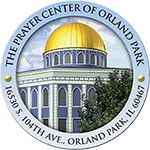As the world celebrated the birthday of Prophet Mohammad last month and will be celebrating the birthday of Jesus this month, it is prudent to show how both of them lived a dedicated life.
Mohammad (PBUH):
“O Prophet! Truly We have sent you as a witness, a bearer of glad tidings, and a Warner- And as one who invites to Allah by His leave and a glorious lamp spreading light.” [fusion_builder_container hundred_percent=”yes” overflow=”visible”][fusion_builder_row][fusion_builder_column type=”1_1″ background_position=”left top” background_color=”” border_size=”” border_color=”” border_style=”solid” spacing=”yes” background_image=”” background_repeat=”no-repeat” padding=”” margin_top=”0px” margin_bottom=”0px” class=”” id=”” animation_type=”” animation_speed=”0.3″ animation_direction=”left” hide_on_mobile=”no” center_content=”no” min_height=”none”][33:45, 46]
The description of Mohammad (S) as “a lamp” or “siraj” is identical to the description of the Sun in Quran: “And made the moon a light in their midst, and made the sun as a glorious lamp.” [71:16]
Within relatively a short period of time, the influence of Mohammad and his prophetic experience in Medina reached vast areas of the Oikumene (the inhabited quarter of the world at that time) from the Pyrenees to the Himalayas. Since the amount of heat that reaches us from the sun is only a tiny fraction of the heat generated in its core, one can similarly imagine the amount of energy generated by Prophet Mohammad (S) so that it was felt at very distant places from Medina. It is not surprising to see Mohammad placed by prominent scholars of the world at the head of the list of those who had tremendous impact on human history.
Jesus, The Son of Mary (PBUH):
“The similitude of Jesus before God is as that of Adam; He created him from dust, then said to him: Be, and he was.” [3:59]
If creation of Adam represented the beginning of humanity, Jesus represented the rebirth of humanity. The greatest sign of all for Mary was giving birth to Jesus without a husband. Together, Mary and her son Jesus constitute one sign or miracle: “And We made the son of Mary and his mother as one Sign.” [23:50]
The sign is not complete for one without the other. For Jesus to be created inside Mary is another reflection of her status in the eyes of her Lord: “And remember her who guarded her chastity: We breathed into her of Our Spirit, and We made her and her son one Sign for all peoples.” [21:91]
Mohammad and Jesus are two iconic examples of human beings who lived a dedicated life. They dedicated their lives to the revelation they received from Allah. They dedicated their life to the high values that are derived from the Beautiful Names of Allah by realizing them and refining their character according to these values. They dedicated their lives to the welfare of their followers, in particular those who were poor, disenfranchised, and marginalized in their communities. They dedicated their life to the liberation of their people from all types of shackles and prisons.
Mohammad: Mohammad is described not only as the Prophet and the Messenger, but also “Ummi”- not to mean illiterate or unlettered, but as someone who belongs to the people and works for the people, and as an advocate of those who are marginalized, disenfranchised, and exploited by the arrogant and the elite in the society.
The stranger who is visiting Medina to meet with the Prophet would address people sitting with him: Who is Mohammad among you? Mohammad was not dressing differently from the people, did not sit on a throne, and did not have a differentiating mark. The bigger picture of the Sunnah formulated from this narrative is to be closer to the people and create the best environment to address their issues and concerns.
Mohammad, in essence, popularized his message without appointing representatives of the religion. The celebrated Historian, Marshall Hodgson, was struck by this sociopolitical phenomenon of populism and described it as the “concern for the ordinary moral needs and capabilities of the common people, as contrasted to the highly privileged classes.”
When a great Muslim icon, Abdul Quddus of Gangoh was narrating the ascent of Mohammad to the highest heaven and returned, he said: I swear by God that if I had reached that point, I should never have returned. Iqbal commented on these words by saying: “[They] disclose that such an acute perception of the psychological difference between the prophetic and the mystic types of consciousness. The mystic does not wish to return from the repose of unitary experience……The Prophet’s return is creative. He returns to insert himself in the sweep of time with a view to control the forces of history, and thereby to create a fresh world of ideals.”
In addition to saints and mystics, history has witnessed large numbers of philosophers and intellectuals who offered their wisdom, ideas, and interpretations to humanity, and tried their best to answer the highly significant and critical questions. However, none of them influenced mankind like the Prophets of God. The reason is that Prophets were in contact with the people and would own their problems. In fact, prophecy can be summarized in a single phrase: commitment to people’s problems and issues.
If you calculate the financial assets of Mohammad (S) you find that he would be among the richest in his days. Yet he died leaving his armor pawned with a Jewish businessman. Where did the wealth that Mohammad gathered from his work as a businessman, the inheritance of Khadija, and the fifth of the bounty of battles go? All this wealth was spent on the needy, “Ahl al-suffa”, a large group of poor and homeless people. They were just an example of people who benefited from Mohammad’s giving and sharing. Quran describes the full dedication of the Prophet to his people: “Ardently anxious over you, to the believers he is most kind and merciful.” [9:128]
By Dr Walid Khayr
[/fusion_builder_column][/fusion_builder_row][/fusion_builder_container]




